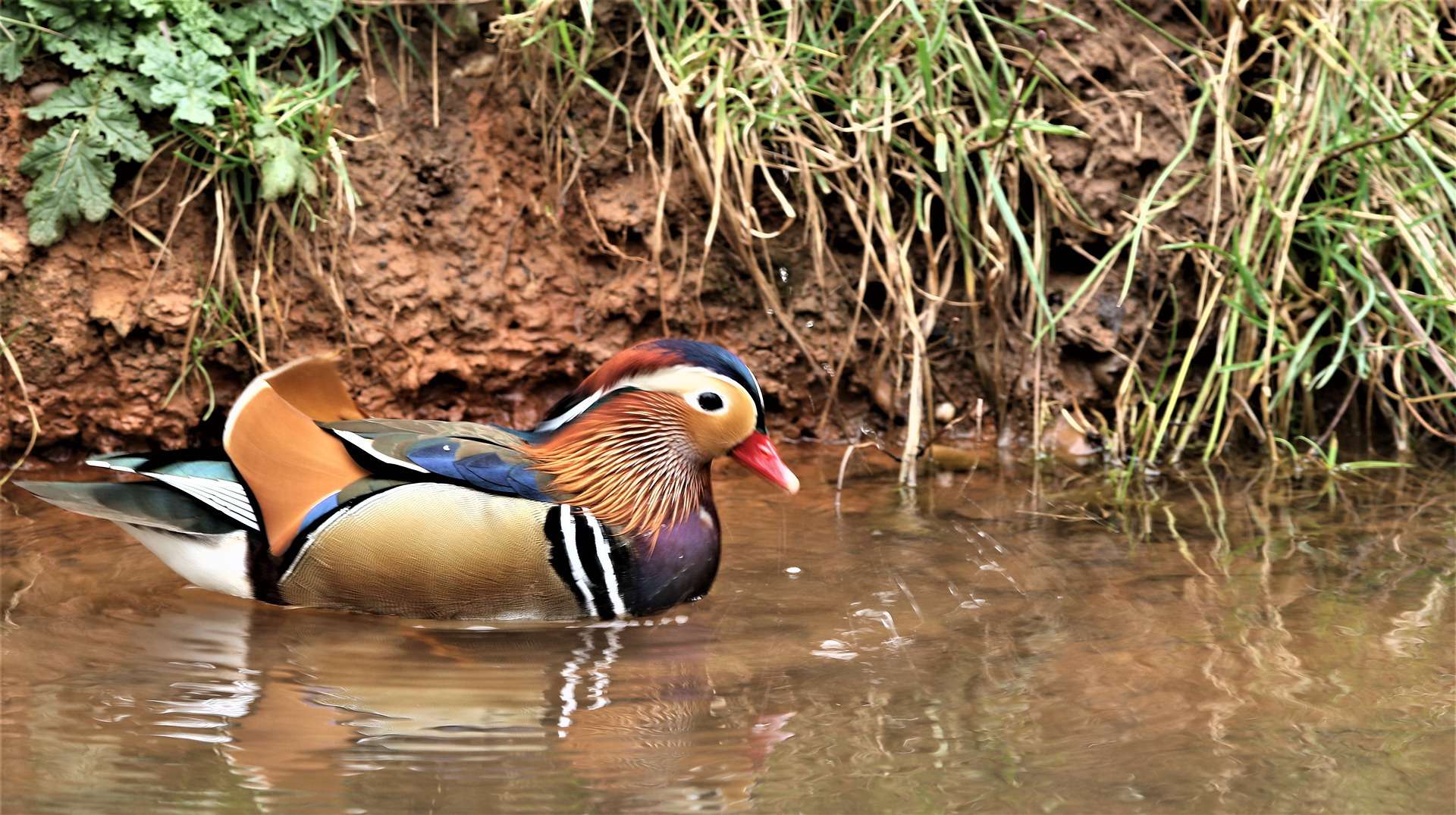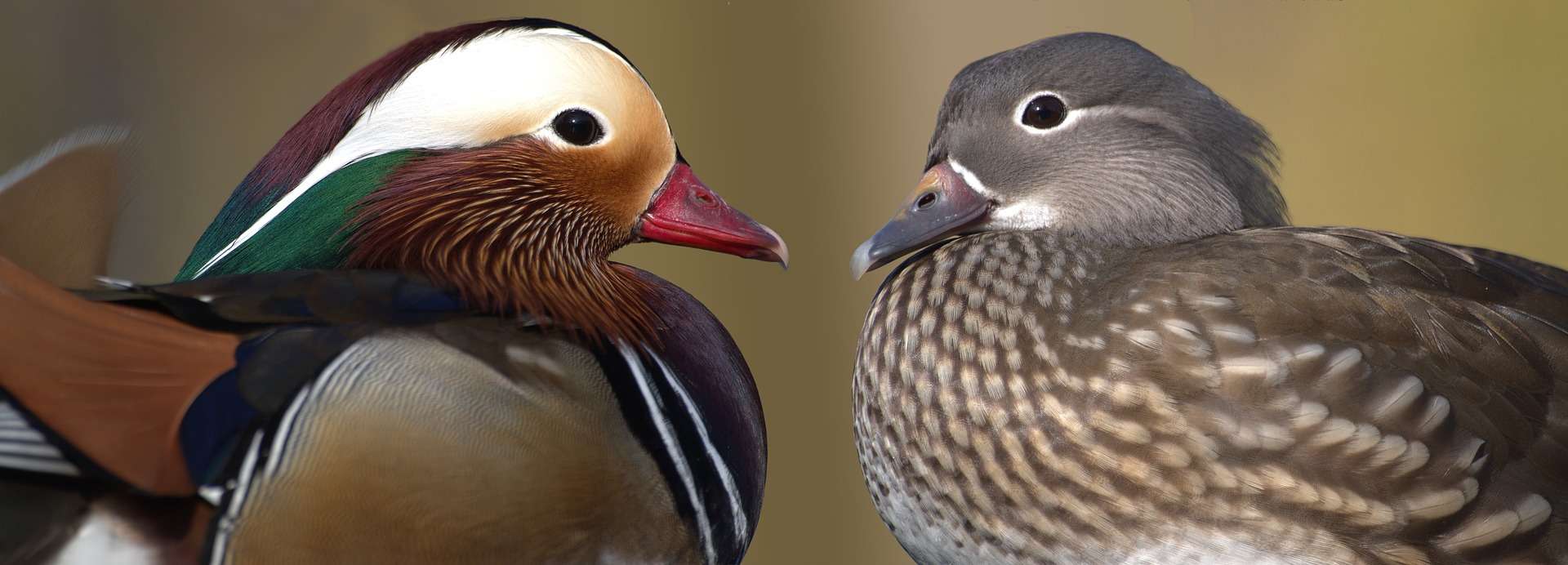
Mandarin (Aix galericulata)
I had a big surprise when I was checking to see if an old Tawny Owl nesting box had attracted any takers. It had never had anything trying to raise a family in it and was starting to get a bit flimsy with age.
The box was about three metres up a Scot’s Pine tree on the edge of a copse in the Surrey Hills above Cranleigh. And there standing at the entrance to the hole was a most welcome occupant.
But it wasn’t an owl – it was a duck!
The beautiful male Mandarin soon spied me and popped back down into the nesting chamber. It sent out a flurry of fluffy down, used to line the nest, through the entrance and into the air.
Male Mandarins are one of our most beautiful birds in full breeding plumage and they are the third most common duck in our vicinity, after Mallard and Tufted Duck.
Their colours are as if borrowed from an artist’s palette. The tufted and elongated head shape reminds me of an ancient Pharaoh’s headdress.
There is orange on a distinctive ruff of long feathers around the head. White and cream surrounds an ‘innocent’looking eye and stretches down the sides of the nape.
The crown is a glossy mix of electrifying blue, green, and copper. A purple breast gives way to black and white bands which then merge into intricately vermiculated pink flanks. Yellow gets a look in too – on the legs and feet.
But the most stunning plumage characteristic is yet to come – it is as if the bird has a couple of orange sails on its back. This is a result of incredibly elongated wing feathers, called tertials.
There is a pink bill too, which is handy for identification outside the breeding season when the male loses its impressive royal clothes and looks drab and grey, as if it was a different species. ‘Womandarins’ are like this all the time but their bill is grey too.
With this owl box Mandarin I was amazed it was nesting so far from water. I looked on the map when I got home and could not detect any nearby likely places it would be escorting its ducklings too.

I reckoned the family faced a dangerous journey through the forest of around a mile before they found a suitable stream or pond.
Mandarins are generally shy and are easily overlooked among other ducks. They prefer quiet backwaters with plenty of side vegetation and often only give away their presence when someone inadvertently gets too close for
their liking.
Then they are off and up into the air, startling themselves and any onlooker, and flying away strongly. Usually I hear them before I see them because they give a distinctive short, sharp whistle.
This strange bird was originally a stranger to Britain from the far east. It was brought over to decorate the ornamental ponds of the rich in the mid-1700s. But luckily escaped – apparently firstly in Berkshire in 1866.
I say luckily because our breeding feral population has been considered to have attained worldwide importance due to a decline in numbers in its original home.
Escapes were supplemented by deliberate released in Cobham nearly 100 years ago and it is these that are reckoned to be the founders of the wild population with us today.
The Chinese government banned the Mandarin from being exported last century and I’ve seen estimates of only 5,000 pairs in Japan, one of its former strongholds. So our waters are giving it some welcome support.
Unlike many other ducks it does not cross with other species and, as a perching duck, it has strong claws and a hind toe which is not lobed.
As well as ponds – where a record number of over 100 were found locally battling out the harsh winter of 1962-1963 – the Mandarin can be found in streams and even ditches.
And although I said it was shy, some are more confiding, as were the pair that raised ducklings in an apple tree in the garden of some delighted friends of mine a few years ago in Avenue Road, Cranleigh.
So if you want to brighten up your garden, even if you are not near water, why not stick up a nest box? You just might be lucky.











